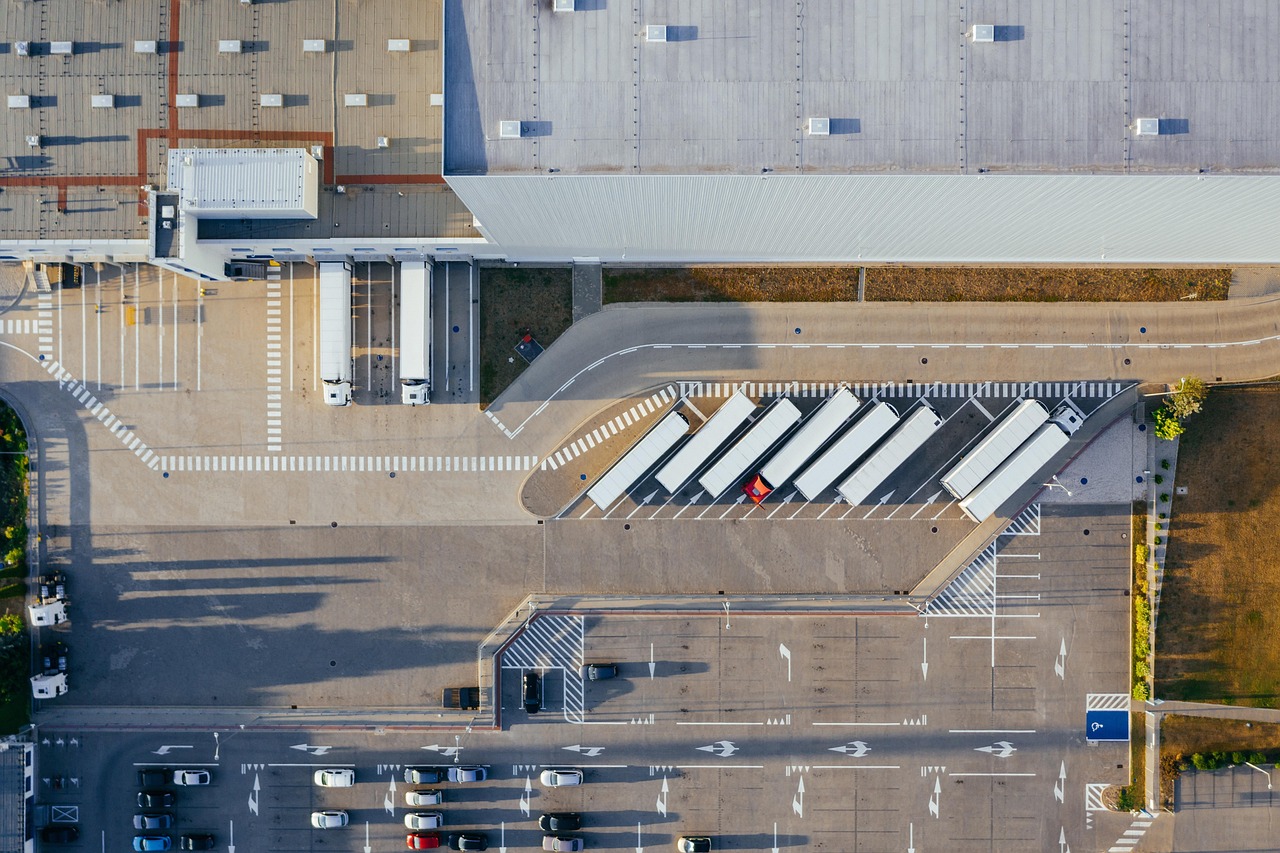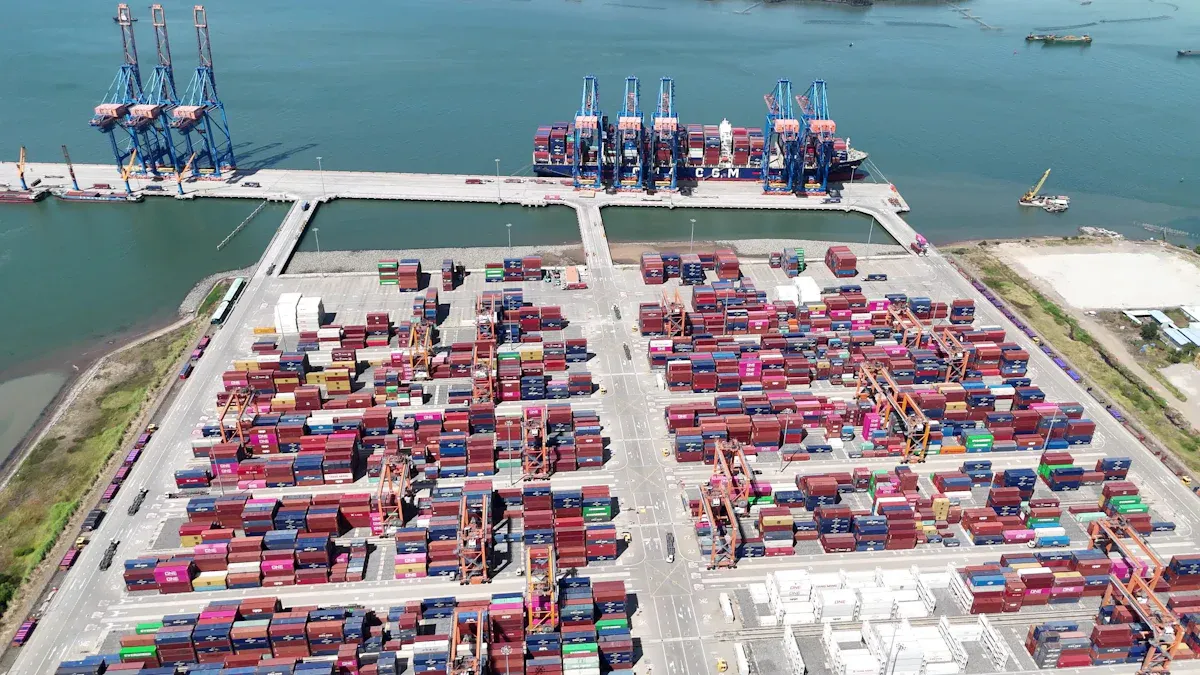Opportunities and Challenges of Integrated Warehousing and Distribution in Southeast Asia

Southeast Asia’s warehousing and distribution sector stands at a turning point. The market is projected to reach USD 42.78 billion by 2030, driven by a 5.3% annual growth rate. Rapid e-commerce expansion, with transaction volumes expected to hit $211 billion by 2025, fuels this surge. Logistics professionals face both opportunity and complexity due to diverse infrastructure, evolving regulations, and the need for true localization. Companies that adapt to these dynamics will power the region’s supply chain engine.
Key Takeaways
Southeast Asia's warehousing and distribution market is growing fast, driven by e-commerce and government support.
Automation and green logistics improve efficiency and sustainability in warehouse operations.
Companies face challenges like infrastructure gaps, complex regulations, and the need to adapt to local cultures.
Digital tools and local partnerships help businesses overcome challenges and boost supply chain performance.
Flexible warehousing and workforce training support better service and faster delivery in this dynamic market.
Opportunities in Warehousing and Distribution

Market Growth
Southeast Asia’s warehousing and distribution sector is expanding rapidly. The market is projected to reach $42.78 billion by 2030, with a compound annual growth rate (CAGR) of 5.3%. Several countries, including Singapore, Vietnam, and Thailand, are leading this growth. Singapore attracts significant investment due to its strategic location and advanced logistics infrastructure. Vietnam experiences high demand for modern warehouses, especially for cold storage, driven by e-commerce and foreign investment. Thailand is expanding automated and cold storage facilities, supported by a $700 million government logistics budget.
The region’s growth is not limited to a few countries. Indonesia and the Philippines are also seeing increased investments from both local and international players. Malaysia stands out with major projects like Maersk’s warehouse capacity expansion and integrated logistics hubs.
Key drivers of this growth include:
Rising demand for temperature-controlled and cold storage warehouses, especially in Vietnam.
Government initiatives to improve logistics infrastructure.
Strategic warehouse placement near ports and airports.
Chinese companies and global players are leveraging these opportunities by relocating manufacturing to Southeast Asia. Lower labor costs and favorable government policies, such as free trade zones and tax incentives, make the region attractive. The "China Plus One" strategy encourages companies to diversify their supply chains, reducing risks from geopolitical tensions and rising costs in China.
E-Commerce Boom
E-commerce is transforming warehousing and distribution across Southeast Asia. In 2024, about 52% of consumers in the region prefer shopping online. Major platforms like Lazada have over 100 million active users. Indonesia leads in mobile commerce, with 67% of orders coming from mobile devices. The number of e-commerce users is expected to grow from 222 million in 2020 to 411 million by 2025, an 85% increase.
This surge in online shopping drives demand for modern warehouses and last-mile logistics. Warehouses now handle more than storage. They sort, pick, pack, and manage returns, supporting a seamless end-to-end supply chain. Companies use AI-powered demand forecasting and automated warehouses to meet high volume and speed requirements. The B2B2C model is common, where goods arrive in bulk, get processed in fulfillment centers, and then move to last-mile delivery.
Convenience matters to consumers. Over half are willing to pay more for a smooth shopping experience, pushing logistics providers to innovate and improve service quality.
Automation Trends
Automation is reshaping warehousing and distribution in Southeast Asia. Companies adopt new technologies to boost efficiency and reduce errors. The most common automation technologies include:
Automation Technology | Description / Adoption Details |
|---|---|
Automated Storage & Retrieval Systems | Improve inventory management and retrieval speed. |
Automated Guided Vehicles (AGVs) | Used for material transport and inventory updates; adoption grew by 20% in 2023. |
Conveyor Systems | Support picking, sorting, packaging, and stock management. |
Robotics | Fastest-growing segment; includes AI-powered picking and sorting. |
Sortation Systems | Enhance operational efficiency in sorting tasks. |
Palletizing & Depalletizing Systems | Automate loading and unloading of pallets. |
AI and Data Analytics | Improve inventory control and decision-making; usage increased by 18% in 2023. |
Cloud-based Warehouse Management Systems | Enable real-time tracking and reduce downtime; adoption rose by 15% in 2023. |
Rapid e-commerce growth fuels a 35% increase in demand for automation. Companies like Dematic, Honeywell, and KUKA Robotics lead the market. Automation not only improves productivity but also shifts labor demand toward skilled workers. In Thailand, automation adoption has increased total employment and operational efficiency.
Green Logistics
Southeast Asia’s warehousing and distribution sector is embracing green logistics. Vietnam promotes sustainable practices through supportive policies, financing, and workforce training. Companies like DHL Supply Chain invest in carbon-neutral warehouses, such as the Maheswara Green Logistics facility in Indonesia. DHL aims to double its electric vehicle fleet in the region over the next five years.
Common green initiatives include:
Use of electric vehicles and expansion of electric bike schemes.
Eco-driving and vehicle routing optimization to cut fuel use and emissions.
Adoption of alternative energy sources, such as solar power.
Carbon-neutral buildings, with all DHL facilities in Singapore and Malaysia already meeting this goal.
Thailand positions itself as a regional logistics hub with a strong focus on environmental protection. Companies integrate green goals with traditional logistics objectives, enhancing both sustainability and cost efficiency.
Full-Link Services
Integrated, end-to-end logistics services are becoming the norm in Southeast Asia. Providers offer comprehensive solutions that cover every step of the supply chain. For example, TransTRACK in Jakarta delivers real-time monitoring and data analysis for delivery fleets, helping companies manage fuel use, traffic, and driver performance.
Other full-link service examples include:
B2B2C models that let overseas sellers register as local sellers, improving speed and efficiency.
Specialized logistics for bulky items, returns, and e-grocery deliveries.
Integrated shipping and logistics solutions with digital tools for transparency and trust.
Co-warehousing networks that reduce costs and environmental impact.
Optimized stock and returns management tailored to the region’s geography.
Sustainable logistics options, such as reusable packaging and carbon-neutral delivery.
Integrated logistics management systems, like WallTech’s platform, combine orders, customs clearance, delivery, and financial processes. These systems shorten delivery cycles, provide real-time tracking, and support digital transformation. Companies benefit from improved efficiency, lower costs, and higher customer satisfaction.
Companies that invest in integrated, digitally enabled supply chains gain a competitive edge in Southeast Asia’s dynamic market.
Challenges in Warehousing and Distribution

Infrastructure Gaps
Southeast Asia faces major infrastructure challenges that slow down warehousing and distribution. Roads, ports, and storage facilities are not evenly developed across the region. Many countries, such as Indonesia and the Philippines, struggle with poor road networks and limited access to remote areas. Port congestion at busy hubs like Ho Chi Minh City and Chittagong often causes shipping delays. These delays disrupt supply chains and increase delivery times.
Infrastructure financing focuses mostly on transport and storage, but a large funding gap remains.
Smaller economies rely heavily on official development finance, while larger economies face project implementation issues.
Loans make up most of the funding, which limits flexibility for new projects.
Private investment stays low because of political instability and weak governance.
The Asian Development Bank estimates that ASEAN needs $3.1 trillion for infrastructure by 2030.
Companies often use real-time tracking and proactive communication to manage congestion-related delays. Freight forwarders help by optimizing carrier selection and planning for disruptions.
These infrastructure gaps lead to higher logistics costs, unpredictable delivery schedules, and lower supply chain efficiency.
Regulatory Complexity
Regulatory challenges create another layer of difficulty for warehousing and distribution companies. Each Southeast Asian country has its own customs rules, trade regulations, and tax policies. These differences force companies to spend more time and resources on compliance.
Customs and trade regulations vary widely, making cross-border operations complex.
New trade agreements, like RCEP, introduce extra rules and require strict compliance.
Logistics infrastructure often lacks standardization, which complicates operations.
Foreign logistics operators face compliance risks, such as customs bond requirements and strict documentation. Mistakes can lead to shipment detentions, fines, or even cargo seizures. Many operators lack proper insurance, which increases their financial exposure. Protection fees, including costs for customs bonds and insurance, become necessary to manage these risks.
Regulatory volatility and compliance risks can disrupt supply chains and raise operating costs. Companies must invest in automation and digitization to keep up with changing rules and higher trade volumes.
Localization Needs
Localization remains a key challenge for international companies entering Southeast Asia. The region’s diversity in language, culture, and consumer habits requires careful adaptation.
Underdeveloped transportation infrastructure leads to longer delivery times and higher costs.
Import and export restrictions, tax policies, and product safety rules differ by country.
Multiple languages and cultural nuances can cause misunderstandings and harm brand reputation.
Payment preferences vary, with many consumers choosing cash on delivery or digital wallets.
Companies must handle different currencies, which adds complexity to financial operations.
Environmental concerns push companies to adopt green practices, raising costs.
Building strong local partnerships and understanding business etiquette are essential for success.
Companies that invest in local partnerships and adapt their services to fit local needs build trust and improve operational effectiveness.
Labor and Productivity
Labor and productivity issues also affect warehousing and distribution in Southeast Asia. Language barriers and cultural differences can disrupt warehouse operations.
Communication problems arise from different languages and business etiquettes.
Cultural diversity leads to differences in recruitment, talent development, and HR policies.
Some workers receive tasks based on nationality, which can create workplace tensions.
Migrant and non-migrant workers may face unequal treatment, affecting morale and productivity.
Successful management depends on partnering with local experts who understand regional customs and regulations. Building trust with local stakeholders helps companies overcome initial hurdles and achieve sustainable growth.
Cost and Risk
Operational risks and costs remain high in Southeast Asia’s warehousing and distribution sector. Port congestion, infrastructure gaps, and regulatory complexity all contribute to increased expenses.
Vessel delays at major ports disrupt production timelines and reduce profit margins.
Congestion leads to higher demurrage and detention charges.
Volatile freight rates and short-term spot pricing make budgeting difficult.
Compliance risks, such as fines and penalties, add to financial exposure.
Companies must invest in insurance and protection fees to safeguard against cargo damage, delays, or regulatory penalties.
Real-time tracking, cargo consolidation, and contingency planning help companies manage these risks, but costs remain a significant challenge.
Solutions and Best Practices
Digital Transformation
Companies in Southeast Asia are embracing digital transformation to boost efficiency and resilience. Many adopt smart logistics technologies such as IoT, automation, and advanced warehouse management systems (WMS). These tools help manage cold chains and support green logistics. Strategic warehouse locations near key transport hubs, like Cainiao’s P.A.T Logistics Park in Vietnam, reduce lead times and costs. Businesses also shift from just-in-time to “just in case” inventory strategies, using digital tools to build supply chain resilience. A study in Indonesia shows that effective warehousing strategies directly influence consumer demand and purchase decisions, highlighting the importance of digitalization in the sector.
A tech-driven approach to full-chain digitalization enables smoother workflows, cost savings, and better inventory management.
Local Partnerships
International companies often form local partnerships to navigate Southeast Asia’s complex regulatory environment. By working with local governments, NGOs, and industry partners, companies ensure compliance with labor and environmental standards. Local expertise helps address labor issues and environmental concerns. Strategic alliances with local businesses improve market understanding and reduce operational risks. These partnerships also help companies adapt to frequent regulatory changes and seize new market opportunities.
Flexible Models
Flexible warehousing models help businesses manage demand fluctuations. Many use scalable, on-demand solutions from third-party logistics (3PL) providers. These providers offer real-time inventory visibility and automated storage systems. Regional warehousing networks near ports and transport hubs lower transportation costs and improve responsiveness. High-density storage solutions, such as multi-level pallet racking, maximize space during peak periods. 3PLs also provide industry-specific expertise, supporting specialized inventory needs like climate-controlled storage.
Workforce Development
Companies invest in workforce development to improve productivity and service quality. Training programs focus on digital skills, automation, and safety standards. Local hiring and talent development help bridge cultural and language gaps. By building strong local teams, companies ensure smoother operations and better customer service.
Data and Analytics
Data analytics plays a key role in optimizing warehousing and distribution. Companies use analytics to power automation, optimize inventory, and improve warehouse slotting. Analytics also tracks workforce productivity and identifies bottlenecks in delivery routes. These insights help companies allocate resources efficiently and enhance customer satisfaction.
Data-driven decision-making leads to faster order fulfillment, lower costs, and higher service quality.
Southeast Asia’s warehousing and distribution sector offers strong growth potential but presents real challenges. Companies can succeed by focusing on these actions:
Build local partnerships to improve market understanding.
Invest in digital tools for better efficiency.
Adapt operations to local cultures and regulations.
Continuous optimization, localization, and innovation drive long-term success. The region’s dynamic market rewards companies that stay flexible and adapt quickly to change.
FAQ
What is integrated warehousing and distribution?
Integrated warehousing and distribution combines storage, order processing, and delivery into one seamless system. This approach helps companies reduce delivery times, lower costs, and improve customer satisfaction in Southeast Asia’s fast-growing markets.
Why do companies choose Southeast Asia for logistics operations?
Southeast Asia offers rapid e-commerce growth, lower labor costs, and strategic access to global trade routes. Many companies use the region to diversify supply chains and reach new customers.
How does automation improve warehouse efficiency?
Automation uses robots, smart systems, and data analytics to speed up sorting, packing, and inventory management. These tools help reduce errors, cut labor costs, and boost productivity.
What challenges do companies face with localization?
Companies must adapt to different languages, cultures, and payment methods. They also need to understand local holidays and customs to avoid delivery delays and build trust with customers.
How can businesses reduce logistics risks in Southeast Asia?
Companies use real-time tracking, local partnerships, and flexible warehousing models. These strategies help manage delays, lower costs, and improve supply chain reliability.
See Also
Overcoming Global Supply Chain Growth Obstacles Effectively
JUSDA Introduces Innovative Warehousing To Boost Efficiency
How Artificial Intelligence Is Transforming Future Supply Chains
Boosting Warehouse Output Through Advanced Robotics Technology
Improving Supply Chain Operations Using Cloud-Based Innovations
